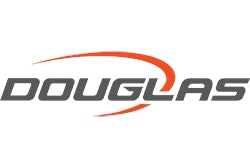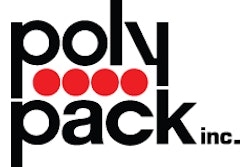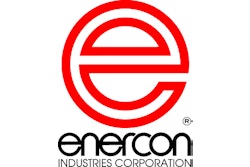Located just outside Montreal in the Quebec town of Rougemont, Lassonde Industries is a beverage company that’s not afraid to experiment. Not only did it lead the way in aseptic filling of plastic bottles in the early ’80s, it did so with a distinctive rectangular bottle that clearly identified Lassonde Fruité as a unique beverage (see Packaging World, Nov. ’95, p. 80 or packworld.com/go/fruite).
Now Lassonde has launched Fruité, a juice drink with 25% fruit content, in a size smaller than the 2-L bottle. Once again, the rectangular shape has been employed. In addition to its ability to differentiate the company’s products, “We like the shape because we don’t waste space in the warehouse, the truck or the store shelf,” says executive vice president of engineering Gilles Guertin.
While the distinctive package shape was retained, the equipment used on the 420-mL line is quite unlike the 2-L line, beginning with the aseptic rinse/fill/cap monobloc. It was manufactured in Italy by Ave, which is represented in Canada by Capmatic (Montreal, Quebec, Canada).
“For this new line I was looking to try a different technology,” says Guertin. He says he appreciates that the rinser, filler and capper are all made by the same manufacturer. Moreover, he says there’s a simplicity to the Ave system that made him want to add it to Lassonde’s stable of aseptic fillers. Simple or complex, it’s still capable of providing the filling speeds that Lassonde required. “We wanted 400 bottles per minute,” and the Ave equipment delivers it, he says.
Included in the new line are a pair of bottle tapers made in Italy by Twin Pack, which is represented in North America by Geosaff (Montreal, Quebec, Canada). Together, the paired machines are able to keep pace with the high-speed line. They automatically collate bottles into groups of three and apply clear polypropylene tape from opposite sides to create convenient three-packs.
Lassonde is believed to be the first company in North America to install one of these Twin Pack machines. It provides a clean, simple, new look, and it keeps the material usage to a minimum, says Guertin. “It also costs less than other multipacking or bundling options,” he adds.
No air-conveying
Further distinguishing the line from most polyethylene terephthalate beverage lines is the notable absence of air conveying equipment for empty bottles. “We know in the future that we will run different bottle sizes on this line,” says Guertin. “With air conveying you can’t be as flexible with the neck size. With the tabletop conveyor we have, neck size makes no difference.”
Lassonde buys its custom-blown PET bottles from Duopac (Pointe Claire, Quebec, Canada). The bottles are depalletized by a machine supplied by Genik (St. Antoine, Quebec, Canada). “They’re located nearby,” says Guertin in explaining Lassonde’s equipment choice. “That’s important.”
Each weighing 26 g, the bottles are swept from pallet layers onto an overhead tabletop conveyor supplied by Storcan (Chateauguay, Quebec, Canada). Orientation doesn’t occur until about 200’ later, when bottles enter a tandem unscrambler
from Orientech (Lachute, Quebec, Canada). Guertin appreciates the machine’s ability to handle Lassonde’s unusual bottle. As he puts it, “It isn’t easy to orient a rectangular plastic bottle at 400/min.”
The unscrambler employs two large bowls to send bottles single-file down two tracks to two stainless-steel tables. In each bowl, bottles tumble in from the Storcan conveyor and circulate freely until they are forced against the perimeter wall of the bowl by centrifugal force. Once flattened against the wall, they’re captured by a guide that leads them down a metal chute. Next they’re conveyed over a device that will only allow them to drop bottom-side down to the stainless-steel table below. Once they’ve dropped, each bottle is captured by vertical guides that prevent bottle tipping as the bottles are swept forward. Bottles are conveyed around a turn and then pass between two guiderails that keep them upright as they continue forward on a tabletop conveyor. A feedscrew combines two lanes into one, and with that, the unscrambler’s work is done.
Next up is filling, done in a room within a room. “It’s a Class 10ꯠ room surrounding a Class 100 room,” says Guertin. “Overpressured HEPA filtered air attains the level of cleanliness desired in each of the two rooms.”
Guertin declines to identify the sterilizing solution used at Lassonde. Developed in-house, Guertin says it sterilizes more effectively than hydrogen peroxide, which is perhaps the most commonly used sterilizing agent in aseptic filling. It also costs less, says Guertin.
Liquid dosing is first
Approximately 40 mL (1.35 oz) of the sterilant is injected into th bottles in the first rotary station of the Ave system as a starwheel carries bottles through a 16-nozzle liquid dosing system. Once its nozzles have injected the sterilizing solution, the starwheel hands the bottles off to an enclosed rotary rinser. Here the bottles are gripped by their neck rings and inverted to drain the sterilizing solution. Bottles remain inverted as they are rinsed, a process that involves two distinct and separate stages.
In the first stage, a second sanitizing solution (also unidentified by Lassonde) is sprayed into and onto the outside of the bottle. Next, a spray of sterile water rinses inside and out. Then the bottle is uprighted and transferred by starwheel onto a platform of the 60-nozzle Ave rotary filling machine.
After the filler, another starwheel exchange takes bottles to the capper. Supplied by Creative Packaging (Buffalo Grove, IL), the injection-molded PP caps have to be sterilized, too. Dry steam injection and what Capmatic calls
“high-intensity UV light” accomplish the cap sterilization.
Inside each cap is a foil membrane that is induction-sealed to the bottle finish by an Enercon (Menomonee Falls, WI) machine that also sits inside the clean room. Bottles then exit the filling room and are conveyed past another filler and capper. The aseptic line shares downstream equipment with a hot-filled glass line. If marketplace requirements call for glass, Lassonde can shut down the front-end aseptic operation and hot-fill glass instead. Both glass and plastic bottles go through the same labeler, tray packer, tray shrink wrapper and tray labeler.
Another piece of equipment the bottles share is the 60’ cooling tunnel in which hot-filled glass is cooled. Naturally, the tunnel is shut off when the plastic bottles go through it. It’s simply a matter of getting the plastic bottles from the filling room to the labeler.
On the discharge side of the cooling tunnel is an accumulation table that provides about seven minutes of accumulation time should there be a stoppage downstream. Then the conveyor side- rails narrow the PET bottles to three or four across. Final single-filing occurs at a point where strips of tabletop conveyor run faster along the rail than the ones out farthest from the rail. This creates gaps along the rail. As bottles fall into the gaps, single-filing is accomplished.
Durable label
A Krones (Franklin, WI) glue labeler applies colorful wraparound labels to the bottles. Supplied by Aluglass (Scarborough, Ontario, Canada), the paper labels are printed offset in four colors. Adhesive-laminated over the printed paper is a clear film substrate that Aluglass declines to identify. It protects the paper from moisture, and it also provides a tough, smooth surface from which the consumer can peel the clear multipack tape without affecting label graphics.
Right after labeling, a Videojet ink-jet coder from Marconi Data Systems (Wood Dale, IL) applies a production code on the bottle shoulders. Bottles then make a big loop, still in single-file orientation, before reaching a gating mechanism that divides bottles into two single-file lanes, each feeding one Twin Pack taper. Each machine uses two rolls of PP, one clear and the other printed with a UPC bar code.
Conveyor flights separate the bottles into discrete groups of three. Immediately after, an overhead flighted chain ensures that the groupings remain unchanged and intact as tape is pulled and applied from both sides. The tape with the bar code imprinted on it must be applied in register so that the bar code always covers the bar codes imprinted on the bottles’ labels. This permits scanning of the three-pack at the supermarket checkout counter. Registration is maintained by a sensor that detects eye-marks on the tape. Based on the location of the eye-marks, the machine can automatically adjust the tape feed to ensure correct registration of the bar code.
Out of the Twin Pack machines, the three-packs are conveyed to a Douglas Machine (Alexandria, MN) Model FTF tray-former/loader. Its infeed section has a diverter arm that fans three-packs out from their single-file flow to eight lanes. At the end of the lanes is a gate that lifts long enough to release a three-pack from each lane. These 24 bottles are then pushed at a right angle onto a waiting tray that has been erected from a flat blank. Tray edges are plowed closed and glued.
Shrink film is applied by a Polypack (Pinellas Park, FL) system. After emerging from the Polypack heat tunnel, trays are conveyed past a print-and-apply labeler from Technopak (Sainte-Julie, Quebec, Canada). An elevator then takes the finished trays overhead and out to a remote palletizing area.
With a six-month shelf life at ambient temperatures, the 420-mL bottles are distributed throughout Quebec, Ontario and the Maritimes. A three-pack sells for about $1.70 (US$1.35).
Running since March ’99, the new line is the ninth aseptic line to be installed in Lassonde’s two Rougemont plants (see story about Oasis brand beverages on page 4). Throughout the firm’s aggressive growth in aseptic filling, standardizing on a single filling technology has never been an objective. If anything, it’s been avoided. As Guertin puts it, “It’s a way to be different, and being different, for us at least, has always been a way of being successful.”



































